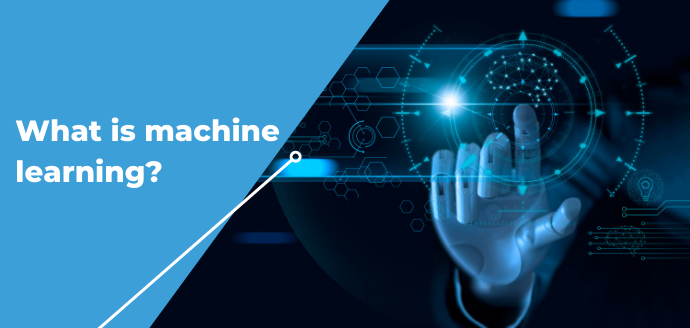
19 May What is Machine Learning?
Definition
Machine Learning is a branch of artificial intelligence (AI) and computer science that focuses on using data and algorithms to mimic the way humans learn, gradually improving its accuracy.
The terms ML and AI are often used together and interchangeably, but they do not mean the same thing. An important distinction is that although everything related to ML falls under Artificial Intelligence, AI does not only include ML.
Machine Learning methods
ML methods fall into three main categories.
1.Supervised machine learning
Supervised learning requires providing the machine’s computer system with a set of notions. These notions must be specific and encoded, such as patterns and examples, in order to allow the machine system to build a real database of information and experience.
When the computer is faced with a problem, therefore, it simply has to go and retrieve the experiences stored in its system, analyse them and select which answer to offer based on the previously encoded experiences.
This form of learning is already packaged in some way, and the machine only needs to be able to determine which output to return is the best based on the given input.
2.Unsupervised machine learning
Unsupervised learning assumes that the information entered into the machine is not encoded. That is, the machine does not need templates or examples. The learning-based machine must independently catalogue all the data it has, organise it and understand its meaning, application and, above all, the end result. Unsupervised learning gives the machine greater freedom of choice, as it has to intelligently organise the information and learn which results are best for the various circumstances that arise.
3.reinforcement learning
Reinforcement learning is probably the most complex learning system, which requires the machine to be equipped with systems and tools to improve its learning and, above all, to understand the characteristics of its environment.
Reinforcement learning differs from other types of supervised learning in that the system is not trained with sample datasets. Rather, the system learns through trial and error. Thus, a sequence of successful decisions will lead to reinforcement because it can immediately solve the problem to the best of its ability. This type of learning is typical of driverless cars, which, thanks to a complex system of supporting sensors, are able to drive on city and non city roads, recognising obstacles, following directions and much more.
What is the most suitable approach?
The choice of a ML algorithm generally depends on factors related to the structure and volume of the data and the use case to which one wishes to apply it.
Examples of Machine Learning
ML has many applications in everyday use. Here are some examples of ML that you may encounter every day:
- The software that allows search engines to respond on the merits to user searches.
- The voice recognition technology found in smartphones.
- Spam filters for unwanted e-mails.
- The creation of personalised advertising based on users’ browsing habits
- Handwriting recognition and conversion software
- Chatbots and virtual assistants




